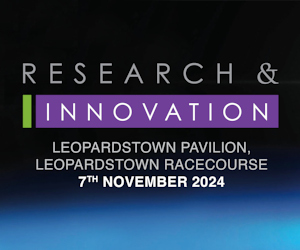UCD wins ESA contract to reduce vibrations in space rockets

When you are sending a rocket into space, every gram costs. But the resulting push to build lighter rockets has a knock-on effect: vibrations on take-off can potentially damage the payload or even alter the trajectory of the rocket itself.
A team at University College Dublin has been contracted by the ESA to develop a smart ‘control algorithm’ that can reduce these not-so-good vibrations.
Sending rockets and their ‘payloads’ of scientific experiments or satellites into space involves a trade-off between the mass of the launcher and the payload itself, explains researcher Dr David McKeown, a research engineer in UCD School of Mechanical and Materials Engineering.
“Every bit of extra mass used to build the launcher means there is a little less mass available to be used for carrying the payload,” he says. “So the push is to make launchers lighter, but this in turn increases the flexibility of the rocket and the vibrations during lift-off.”
As part of ESA’s Future Launchers Preparatory Programme, McKeown and Dr William O’Connor at UCD are developing the algorithm to monitor the rocket structure in real-time and ‘tell’ the rocket’s engines to fire in a way that reduces the vibrations.
“Our research is about making the flight of the rockets smoother by eliminating the vibrations caused by the engines and the sloshing of the fuel in the tanks,” says McKeown.
“Our approach measures the vibrations using sensors on the rocket itself, then the algorithm uses this information to tell the engines and thrusters on the rocket to fire in a way that dampens shaking and bending even as the rocket flies through the Earth’s atmosphere at 28,000 km/h. Effectively, this algorithm uses maths to control the rocket dynamically.”
Reducing the vibrations has other benefits too, according to McKeown.
“It keeps the rocket on course following the correct trajectory more closely on its way into orbit,” he says. “It also means the payload is better protected – these rockets can carry delicate instruments as their cargo and they may be sensitive to vibrations, so having fewer vibrations helps there. Also, if you are able to control for the vibrations caused by lighter, more flexible materials, it allows for lighter rocket designs that require less fuel and that cost less to launch.”
McKeown and O’Connor have previously worked with ESA on the control of a large X-ray observatory (IXO, now ATHENA) and on a prototype flexible robot arm concept for a future ESA Mars rover mission (DExtrous LIghtweight Arms for exploratioN, or DELIAN).
The €250,000 project to reduce rocket vibrations will last two years and is expected to inform the design of the next generation of European launchers, but the work should have an impact on current launchers too, explains McKeown.
“A lot of the focus is on the design of the Ariane 6 rocket, but the work will also be fed back into current designs that are already launching satellites into space, such as such as VEGA and Ariane 5,” he says.








There are no comments at the moment, do you want to add one?
Write a comment